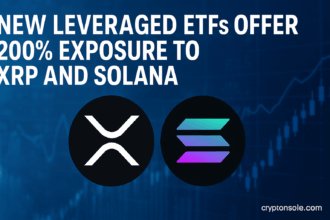Fintech heavyweight Stripe and venture-backer Paradigm are accelerating their push into payments infrastructure via their incubated blockchain project Tempo. Tempo has closed a $500 million Series A financing round that values the company at approximately $5 billion, aiming to build a high-throughput, U.S. dollar–backed payments settlement layer.
What Happened
The funding round was led by Thrive Capital and Greenoaks, with participating investors including Sequoia Capital, Ribbit Capital, and SV Angel. Notably, neither Stripe nor Paradigm invested7 fresh capital in this round, despite being early incubators and strategic backers.
Tempo is being built as a Layer 1 blockchain optimized for payments and stablecoin transactions, designed to support enterprise-grade throughput, low latency, and regulatory compliance. Core team members from open-source and crypto infrastructure projects (including talent from Ethereum Foundation research) are joining Tempo’s engineering efforts to strengthen its architecture.
Why It Matters
1. Reinforcing Dollar-Backed Payment Rails
Tempo’s value proposition is to become a blockchain solution tailored for real-world U.S. dollar payments and stablecoin rails. With Stripe’s existing payments infrastructure and recent acquisitions (e.g., stablecoin and wallet firms), Tempo may integrate deeply into the firm’s broader financial stack.
2. Escalating VC Confidence in Payments Infrastructure
A $5 billion valuation at Series A signals strong investor conviction in the convergence of crypto and traditional payments. Investors appear bullish on infrastructure that bridges fiat and digital rails.
3. Competitive Pressure on Legacy & Crypto Payment Networks
By building a payments-first blockchain optimized for stablecoin settlement, Tempo may present a challenge to both incumbent payments networks and general-purpose blockchains vying for transaction volume.
Risks & Considerations
- Regulatory scrutiny: A payments-focused blockchain operating with dollar-denominated assets will attract attention from regulators, especially around stablecoin issuance, money-transmission licensing, and compliance.
- Decentralization vs centralization: Balancing enterprise requirements with openness and decentralization may prove difficult in early stages.
- Execution & adoption: Delivering high throughput, security, and integrating with merchant systems will be technologically and operationally demanding.
- Token model & economics: If Tempo issues a native token, structuring incentives and fee models will be critical to long-term viability.
What to Watch Next
- Product roadmap disclosures — timing of mainnet launch, throughput targets, and settlement features.
- Partnerships & pilot deployments — which merchants, financial institutions, or fintechs will begin using Tempo rails.
- Stablecoin integrations & issuer support — support for existing dollar assets (e.g. USDC, USDT) and alignment with issuers.
- Token economics (if applicable) — native token issuance plans, governance, and fee structures.
- Regulatory filings & licensing — how Tempo and Stripe navigate U.S. and global payment regulation.
Bottom Line
The $500 million Series A at a $5 billion valuation marks Tempo as one of the most prominent new entrants in payments infrastructure. Incubated by Stripe and Paradigm, its focus on scaling stablecoin and dollar-backed settlement9 is a logical extension of Stripe’s fintech ambitions. If successful, Tempo could become a backbone for on-chain corporate payments and usher in deeper crypto-fiat integration—but execution, regulatory clarity, and adoption will determine its impact.
59NBT3X3












